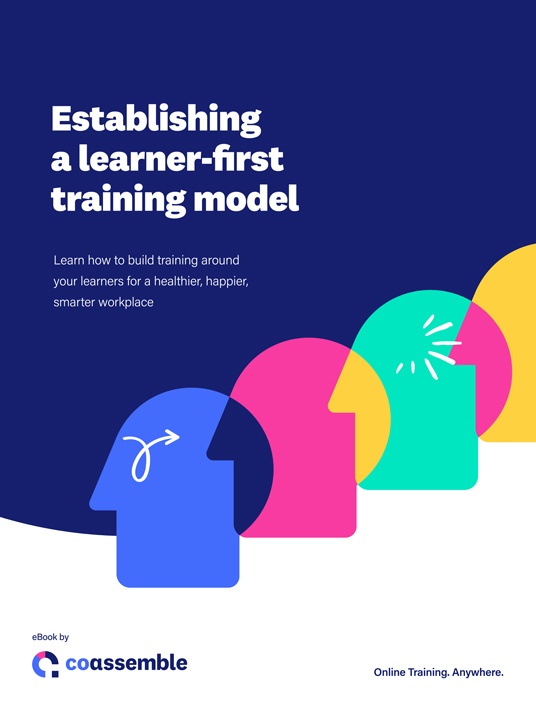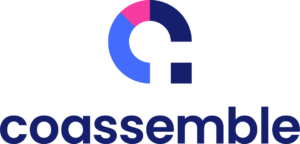Planning Towards The Learner-First Training Design
What Is The Learner-First Training Model?
In a learner-first training approach, trainers always start with the learner. The learner is the basis for every aspect of a company's training strategy, from the company's learning goals to their learner pathways to the tools that they choose to train and the way they design their training.

Whilst this may seem like common sense, it's actually not what a lot of trainers do.
Why You Need To Plan Your Learning Design
As we’ve discussed in the past, the learner-first model is about planning and preparation before diving straight into design and implementation. Too often, trainers jump headlong into creating their training, before stopping to think about the most important part of their training strategy - their learners. Your training content could be the shiniest, most well-made training going around, but if it’s created without consideration of your team’s learning preferences, habits, and interests, your training runs the risk of being a total flop.
Luckily, in this day and age, there has been plenty of information available regarding the ways in which you can create learner personas, define learning goals [1], structure learner pathways, and choose the right learning tools, which should mean you arrive at the design stage having ticked off the following boxes:
- You know who your learners are, and how they want to learn.
- You know exactly what knowledge you need to share with your learners.
- You can plot every step in your learners’ journey to knowledge.
- You know what learning tools you have at your disposal.
Planning out your learning design with that knowledge on hand should be a breeze!
Step 1: What Knowledge Am I Sharing?
The first step in planning your learning design is looking at what knowledge your training needs to share. If you have already defined your learning goals, this should be clear.
Now, consider that knowledge, and whether it’s best delivered as one piece of learning content or many. For example, you may be rolling out compliance training around workplace health and safety. Is this best delivered as one extended learning resource, or split up into many? This will depend on your learners, and how they like to learn. Remember; if you’re training multiple groups of learners (as identified by your learner personas), then you’ll have multiple learning goals, which may require more learning content or variations of learning content.
Step 2: Where Does My Learning Fit On My Learner Pathway?
Once you’ve split your learning goals up and identified how many pieces of learning content you need to produce, it’s time for you to look at where your learning content will sit in your broader digital training strategy.
This is where your learner pathways will come in handy. If you haven’t mapped out your learner pathways, don't worry as there is always time for you to start structuring them [2]. Take a look at your learner pathways, and identify where in each pathway your different pieces of learning content will sit.
For example, one of your groups of learners may have the following learner pathway:
- The learner is notified of new learning content via email; clicks link in the email to access learning content in LMS; completes learning content; receives an email 3 days later with a link to knowledge retention exercise; clicks link to access retention exercise in LMS; completes retention exercise.
This is a pretty straight-forward example, but it still illustrates the importance of knowing the context of where our learning content will sit. We now know where our learners have come from before completing the content, and where they will go afterward, and our design should change accordingly.
You may have multiple learner pathways, and multiple steps that involve learning content - mapping out every step in this journey will allow you to have full clarity on your digital learning strategy.
Step 3: What Tools Am I Using And How Am I Resourcing My Design?
Now that you know how many pieces of learning content you’re building and where they fit within your learner pathways, let’s look at your tools and resourcing.
As we discuss in our article about tool choice [3], your understanding of your learners should guide your decision on what to use to design your learning content. You may decide an authoring tool that allows for bite-sized learning suits your learners best at that point in their learning pathway. Maybe a large piece of interactive eLearning would work better. Or, you may look to emerging technologies such as podcasts or interactive webinars.
Finally, you’ll need to plan out your resourcing, as you would with any learning design. Who will be creating this content? Do they know how to use the tool that you’ve chosen? What’s the cost and timeline of production?
Step 4: Building A Clear Picture Of Design
By now, you should have a pretty clear picture of what learning content you’re building, where it sits in your training process, and how you’re building it. The final step before actually getting into the design stage is to build a clear picture of your design. This means storyboarding out your learning content before getting into the nitty-gritty of design.
It’s Design Time!
You’re ready to get designing! But what does learner-first design entail, and what are some of its key principles? Stay tuned for an article on creating engaging learning content by putting your learners first.
Wondering how to implement your own learner-first training model? Download the eBook Establishing A Learner-First Training Model and discover the step by step process on how to perfectly execute the goal of making the learner have success. Also, discover how to incorporate career mapping into your digital training strategy using a learner-first approach through the Webinar 6 Steps To Incorporate Career Mapping Into Your Digital Training Strategy.


